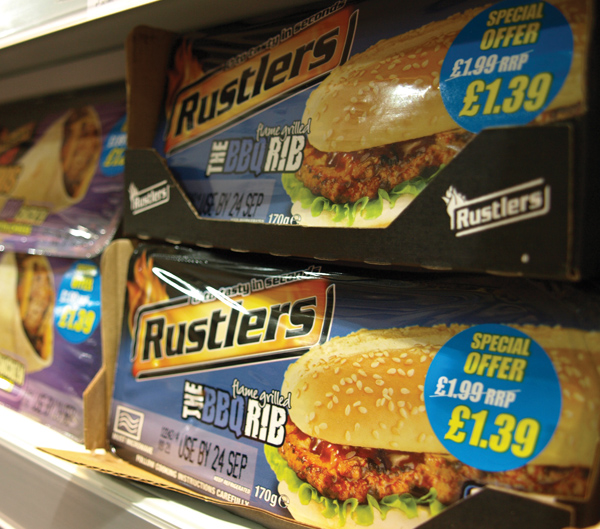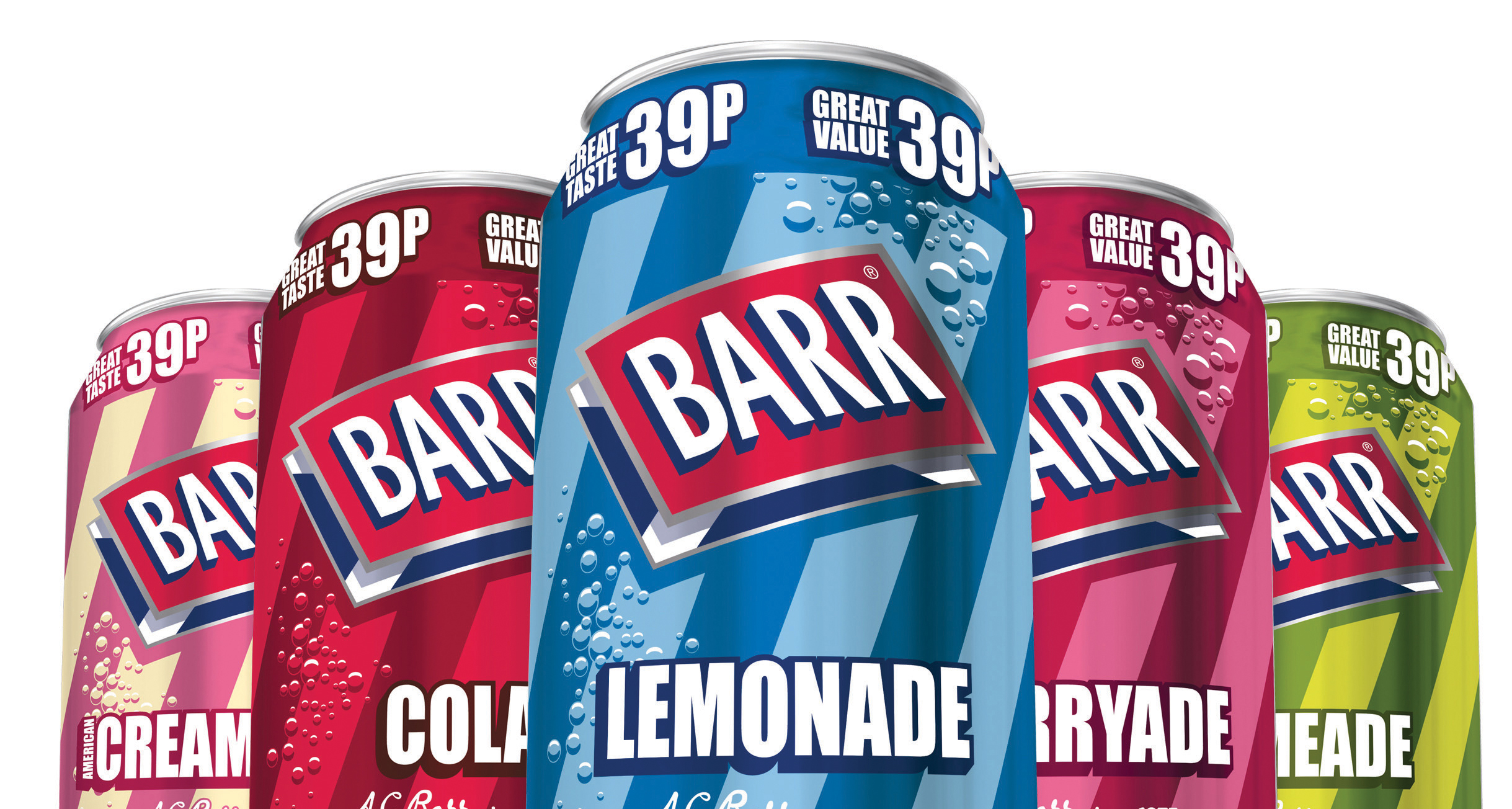The growth of price-marked packs over the past few years has been astonishing, with retailers who once avoided PMPs like out-of-date stock now actively seek them out in a bid to meet consumer demand for perception of value.
by Kevin Scott
A revolution is taking place across convenience retail and the much derided price marked pack is slowly taking over every category instore as consumers seek out a constant and identifiable value for money. When retailers once bemoaned prices being set by suppliers, and would avoid them at all costs, cash and carrys now regularly stock both PMP and non-PMP versions of the same product. And companies with new products being launched are never shy to shout about how price-marked versions are available. The big question is whether this really does help sales, and whether consumer perceptions are as important as implied.
There’s an old story that does the rounds at SLR involving being in a convenience store with a supplier when working on one of our innovative in-store projects. A customer in the store asked for a specific ‘behind the counter’ product in a price-marked pack. When he was told the non-marked packs were the same price, he still insisted on buying the price-marked pack. This anecdote highlights that it is not price that lures consumers to price-marked packs, but the perception of value – it is this idea that they are not being overcharged that makes them reach for a PMP. Now, convenience stores don’t overcharge but it is widely held (if inaccurate) notion that they are more expensive than supermarkets. Price marked packs change that – they send out a message to customers to say that the price is the same wherever it is bought. As a result of that, there is increased confidence in shopping in the local store, and the local retailer makes more money as a result.
Look at newspapers, not many retailers stop to question the fact they don’t set prices on newspapers. Okay, there are some who have questioned this principal and would campaign to be able to set their own prices and therefore their own margins on newspaper sales, but the point is that when a customer buys a newspaper, they know how much it costs and they know it costs the same in any type of store in any corner of the country. This is what is now leaking into other categories.
Tobacco was one of the first categories to introduce price marked packs, and they are now pretty-much standard. Take for example, JTI, which recently launched Amber Leaf Blonde – a new variant of the best selling RYO brand. Along with standard packs came PMPs which are below the standard price. The same can be said for the recent Sterling refresh, and it’s not just JTI. Every other tobacco manufacturer has PMPs available across their range.
Move through your shop and there’s likely not a category left that’s not been touched by the trend – from frozen, to pet food, confectionery to crisps and soft drinks. And beyond. For example, price Marked packs in the bakery section was unthinkable not so long ago, and now even market leaders like Warburtons have introduced packs. Darren Littler, Director of Innovation at Warburtons, comments: “Price Marked Packs can ensure a positive price perception with shoppers and gives them the confidence that they are getting good value for money resulting in greater sales. With consumers increasingly looking for healthy options, our Half & Half Toastie Loaf and White Plus Milk & Calcium is aimed at growing the category by providing loaves with all the taste of white bread with additional nutritional benefits – perfect for those shopping for families.”
Making a mark in off-trade
In the off-trade section, PMPs have long been used on multi-packs to denote the value of the deal – such as ‘6 cans for £5’. However, in the wake of the Alcohol Act, companies have to be careful with what they say, although if a six-pack of beer comes as a single SKU, it can gleefully exclaim its price on the packaging.
One such company is Wells and Young, which has just launched a McEwan’s Export 4X 440ml shrink wrap can pack with a £4.75 flash. This despite it commanding over 80% of premium canned ale sales in Scotland. The reason? To boost those sales further. Wells & Youngs Director of Sales for the off-trade, Karl Frestle, says: “Shoppers stocking up for social gatherings will want to buy a big name brand like McEwan’s and PMPs give a perception of better value.”
It’s when market leaders turn to PMPs that you know they’ve gone mainstream. So when Diageo recently announced the staggered launch of a number of Price Marked Packs, it only served to highlight the consumer expectation for PMPs. Over the next two months, the drinks giant will introduce a host of promotional bottles and cans of its best-selling brands, including Smirnoff, Bell’s, Captain Morgan’s Spiced, Guinness, Smirnoff Ice and its popular pre-mix range to stand alongside standard plain packs.
As part of a wider ‘Shopper Understanding’ research piece, Diageo GB has found that PMPs can improve shopper’s perceptions in convenience retailers, with 86% saying they would trust a price marked item over the price on-shelf and 70% viewing PMPs as a promotion. Shoppers are also willing to pay more for ‘convenience’ but need reassurance they are getting value and PMPs can give consumers confidence that they are paying a fair price.
Additional findings revealed that 90% of convenience consumers would consider buying price marked spirits, so retailers can harness this by stocking this range.
Diageo GB has also identified that 93% of convenience shoppers are looking for ‘something for tonight’. This occasion is an ideal platform for promoting smaller pack sizes, which are growing 10 times faster than 70cl spirits. Price marked packs of 35cl and 50cl Smirnoff and 35cl Bell’s will also be introduced to the channel.
Roz Nash, Senior Category Development Manager for Convenience says: “Price marked packs are increasingly popular with consumers seeking reassurance that they are getting value for their money. Whilst shoppers are willing to pay more for convenience, there is a distinct perception that supermarkets will offer better quality at a more competitive price. By introducing price marked spirits, beer and pre-mix SKUs to their shelves, convenience retailers can offer what shoppers see as a promotion and drive greater rate of sale than the unmarked packs.”
So, the message for retailers is clear; price marked packs can deliver increased sales. And for retailers shaking their heads at this business of marking prices because margins are dented, remember the old saying that says 1% of something is better than 100% of nothing. Increased sales means more cash, means more profit, and customers are happy to boot – the only question outstanding is that if you’re not stocking price marked packs, why not?





